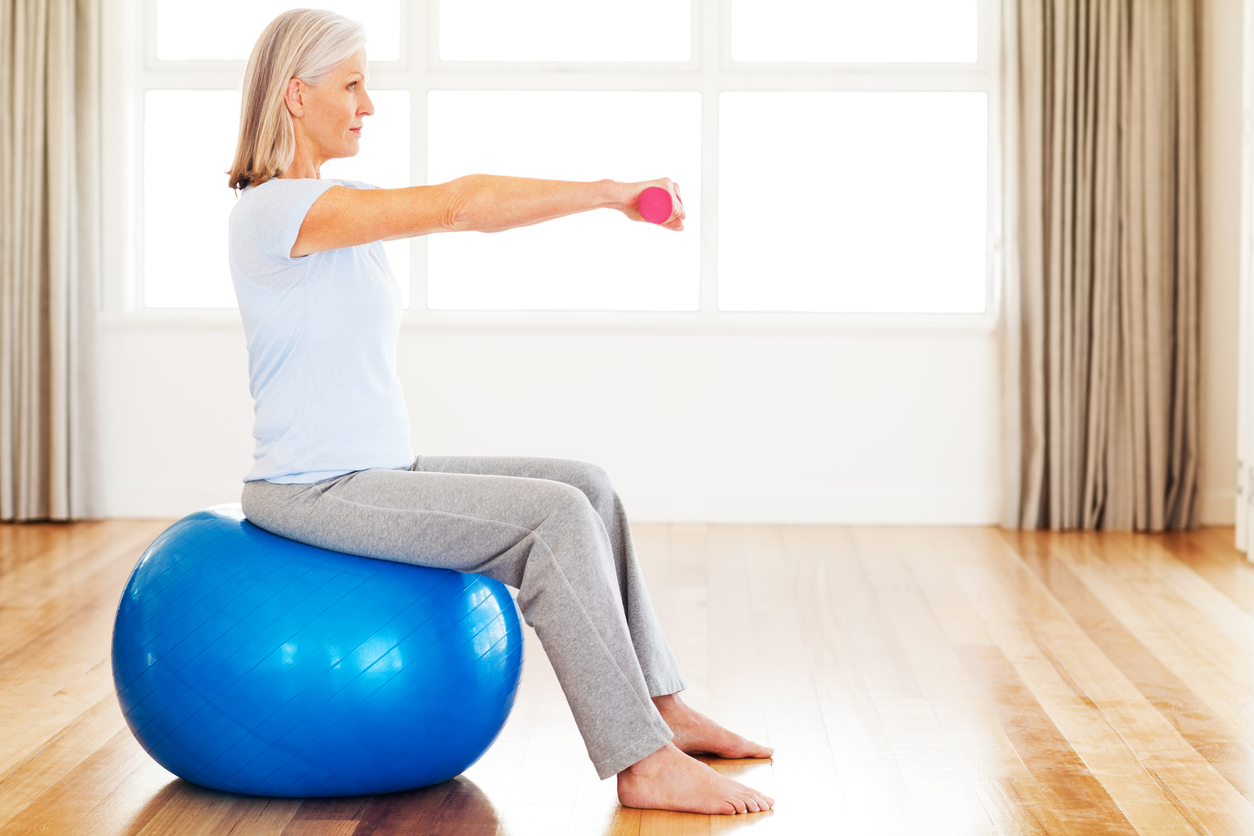We all want a flat tummy, but let’s face it, core exercises like crunches and sit-ups can wreak havoc on our lower backs. To combat that issue and help us work our cores safely, we contacted our friend and contributing fitness editor, Debra Atkinson of Flipping Fifty, to show us a few stability ball exercises.
Stability Ball Exercises for Your Core

A strong core is integral to a healthy physique. Weakened abdominal muscles can cause major issues with the lower back, and building up your core can help prevent that. A strong core is also a major contributor to better balance and stability and can help improve posture.
While our abs are an important part of the core group of muscles, keep in mind that balance is key. While sculpted abs are nice, remember to also work out your hip and back muscles for a well-rounded core.
These exercises are best for intermediate or advanced individuals, so take care not to overdo them!
Leg Extension
The first of our stability ball exercises is the Leg Extension. Leaning back on the ball, move slowly through the leg extensions, one after the other, and engage your stomach muscles. It may take a little “dancing” to get these right, but you’ll feel how maintaining your balance strengthens your core.
Ball Plank
The second of our stability ball exercises is the Ball Plank, which is a variation on the floor plank. Leaning on the ball – with your forearms engaged in balancing your weight, elongate your body and push back with your heels.
Ball Crawl
In the third exercise, you’ll lie with your stomach on the stability ball, then crawl forward with your hands until your legs are balanced on the ball. From there, raise one leg at a time. You’ll feel this in your core and glutes.
Remember: Always make sure you check with your doctor before beginning any exercise program.
Stability Ball Leg Exercises
If you want to strengthen your legs without doing squats and lunges, you can do so with the ball as well. Here is another video to help you work out these major muscles without putting pressure on your ankles, knees, and hips. Debra walks you through two exercises: a hamstring curl and a bridge with straight legs.
Which Stability Ball Is Right For You?
If you don’t already have a stability ball on hand, there are a lot of options out there, and it can be a little overwhelming. When selecting a stability ball, the best idea is to take it for a test drive. Sit on it and see how it measures up to your body. The right ball for you should allow you to sit with your feet on the floor and your thighs parallel to the ground.
Stability balls are typically associated with your height. A good guideline is to use a 55 cm ball if you’re between 4’11” and 5’4″ tall, a 65 cm ball if you’re between 5’4″ and 5’11” tall, or a 75 cm ball if you’re between 5’11” and 6’7″ tall. However, these are just suggested sizes, so if you have the opportunity to sit on the ball before purchasing, that’s the best way to go about selecting one.
Stability ball exercises will tighten and strengthen your core without doing unnecessary damage to your discs. Plus, you can strengthen your legs without risking your joints. However, if the exercises discussed in this article are a bit advanced for you, we have options that are more geared towards beginners. Visit our Prime Women YouTube channel and get started today with “Are Your Core Exercises Hurting Your Back?“
Read Next:
5 Resistance Training Exercises for Women Over 50
How to do Chair Yoga and the 6 Best Poses








